GP84
| Location: Seaton | Australian Soil Classification: Haplic, Eutrophic, Red DERMOSOL |
| Geology: Tertiary basalt. | General Landscape Description: Low hills. |
| Soil Mapping Unit: Seaton. | Site Description: Roadside cutting on mid-slope of hill (SE aspect). |
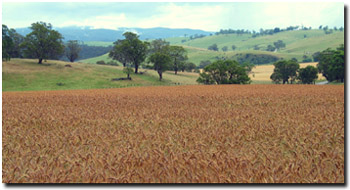 Site GP84 Landscape |
Soil Profile Morphology:
| Surface Soil | 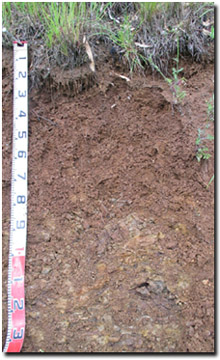 Site GP84 Profile | ||
| A1 | 0-20 cm | Brown (7.5YR5/4); light medium clay; strong medium, parting to strong fine, parting to strong very fine blocky structure; pH 7.1; gradual change to: | |
| Subsoil | |||
| B21 | 20-50 cm | Reddish brown (5YR4/4); medium clay; strong coarse, parting to strong medium blocky and strong fine polyhedral structure; friable when moist; pH 7.7; gradual change to: | |
| B22 | 50-80 cm | Reddish brown (5YR4/4); medium clay; strong coarse to medium blocky structure; pH 8.2: | |
| C | 80+ cm | Weathered basalt. | |
Key Profile Features:
- Gradual increase in texture (clay content) with depth.
- Well-structured surface and subsoil horizons (parting to fine-sized peds).
Soil Profile Characteristics:
Horizon | pH | Salinity Rating | ||
Surface (A1 horizon) | Slightly Alkaline | Very Low | Non-Sodic | None |
Subsoil (B21 horizon) | Slightly Alkaline | Very Low | Non-Sodic | None |
Deeper subsoil (at 50-80 cm) | Moderately Alkaline | Very Low | Non-Sodic | None |
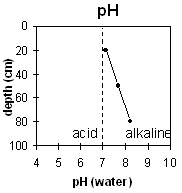 | 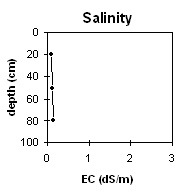 |
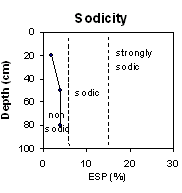 | 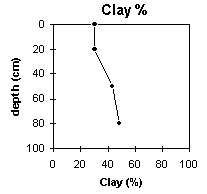 |
Horizon | Horizon Depth (cm) | pH (water) | pH (CaCl2) | EC 1:5 | NaCl | Exchangeable Cations | |||
Ca | Mg | K | Na | ||||||
meq/100g | |||||||||
A1 | 0-20 | 7.1 | 6.4 | 0.09 | 20 | 11 | 0.32 | 0.76 | |
B21 | 20-50 | 7.7 | 7.1 | 0.13 | 23 | 13 | 0.31 | 1.4 | |
B22 | 50-80 | 8.2 | 7.6 | 0.14 | 30 | 16 | 0.25 | 1.7 | |
Horizon | Horizon Depth (cm) | Exchangeable Aluminium mg/kg | Exchangeable Acidity meq/100g | Field Capacity pF2.5 | Wilting Point pF4.2 | Coarse Sand (0.2-2.0 mm) | Fine Sand (0.02-0.2 mm) | Silt (0.002-0.02 mm) | Clay (<0.002 mm) | Bulk Density Kg/L |
A1 | 0-20 | 5.7 | 32.2 | 18.3 | 4 | 40 | 23 | 30 | 3.1 | |
B21 | 20-50 | 39.3 | 23.6 | 5 | 29 | 19 | 43 | 4.0 | ||
B22 | 50-80 | 47.9 | 28.5 | 6 | 23 | 19 | 48 | 2.9 |
Management Considerations:
Whole Profile
- The soil profile is well structured throughout (parting strongly to fine and medium sized polyhedral peds) and is friable when moist. This will provide good conditions for root and water movement and the soil will be well drained. The soil also has a high inherent fertility and is unlikely to have any significant chemical or physical limitations to plant growth.
- Free iron oxide levels are reasonably high (but not quite high enough for this soil to be classified as a Ferrosol). These levels of free iron oxide may tend to ‘fix’ phosphorus to some degree – making it less available to plants. Regular phosphorus application can assist in overcoming any deficiency. Addition of molybdenum may also be required. Deficiencies can be assessed by plant tissue analysis.
- Soil compaction from trafficking can lead to reduced water infiltration and retention as well as an increase in soil strength (resulting in more mechanical resistance to roots) and cloddiness. Compaction of these soils with high clay contents can be caused by over-cultivation or trafficking of the soil (particularly when moist to wet).


